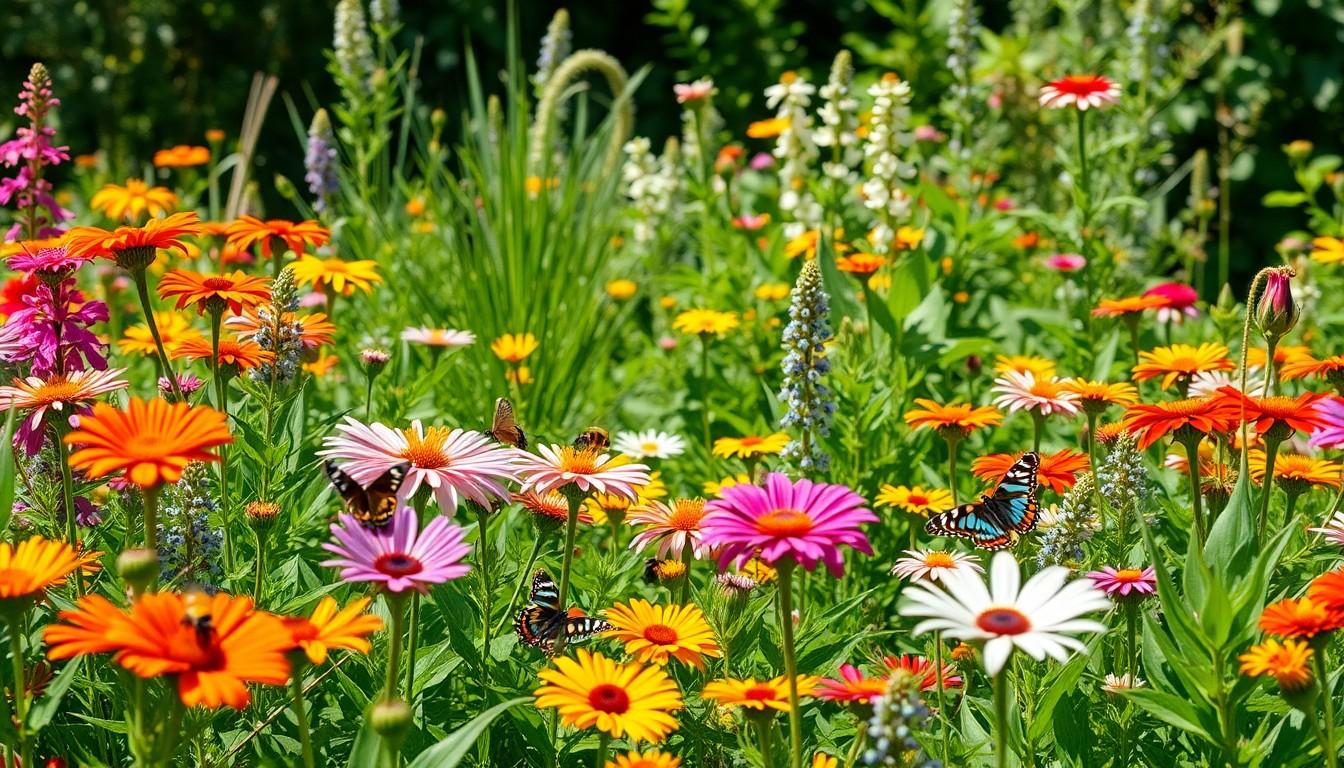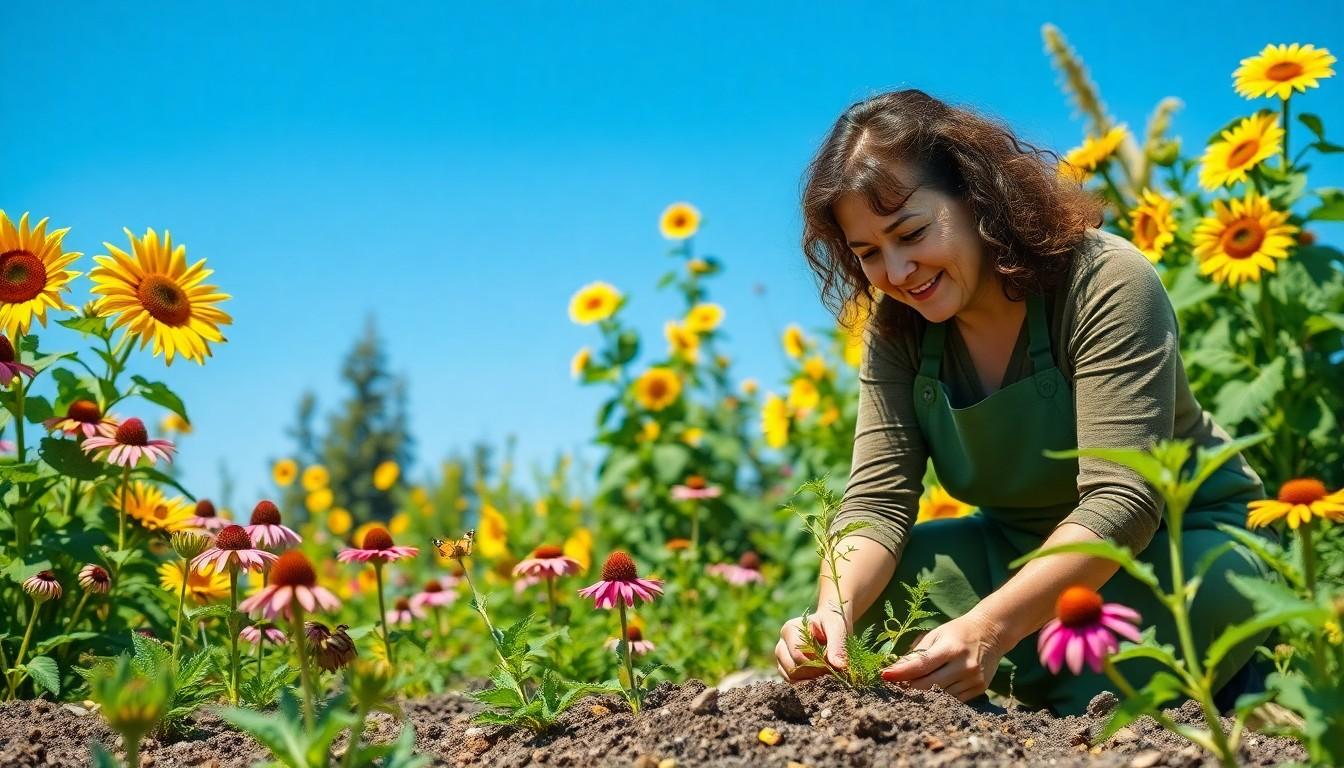When it comes to gardening, why settle for the ordinary when you can embrace the extraordinary? Native plants of North America are like the rock stars of the botanical world. They’ve adapted to local climates and ecosystems, making them the perfect choice for anyone looking to cultivate a thriving garden without the fuss. Plus, they come with a built-in support system—local pollinators love them!
Imagine transforming your backyard into a vibrant oasis that not only looks stunning but also supports local wildlife. From the majestic sunflowers to the resilient coneflowers, these plants are not just beautiful; they’re also low-maintenance and eco-friendly. So why not give your garden a chance to shine with the best that North America has to offer? Dive into the world of native plants and discover how they can turn your outdoor space into a natural masterpiece.
Overview Of Plants Native To North America
Native plants of North America thrive across diverse ecosystems, from deserts to wetlands. These plants serve crucial roles in their environments, supporting a vast array of wildlife, including birds and insects. For example, Goldenrods attract over 100 species of pollinators, making them vital for ecological health.
Diverse species grow throughout the continent, demonstrating unique adaptations. Eastern regions boast vibrant flowering dogwoods and red maples, while western landscapes feature the resilient sagebrush and majestic giant sequoias. These plants withstand local climate variations, ensuring their survival and integration into ecosystems.
Furthermore, gardeners benefit from planting native species. Native plants require less water and fertilizers, making them more sustainable choices. Their natural resistance to local pests reduces the need for chemical treatments, promoting healthier gardens.
Examples of popular native plants include Black-eyed Susans and Butterfly weed, both offering aesthetic appeal and ecological advantages. Planting such species supports local food webs and pollinators crucial for plant reproduction.
Understanding the importance of native plants fosters a greater appreciation for biodiversity. Conservation efforts focus on preserving these species, recognizing their contributions to ecosystem stability. Each native plant plays a role in maintaining the balance of its environment.
Importance Of Native Plants

Native plants play a vital role in maintaining ecological balance and health. They provide essential habitats and food sources that support local wildlife, including birds and insects.
Ecological Benefits
Native plants enhance biodiversity in ecosystems. They support a variety of wildlife, from pollinators like bees to birds that rely on seeds and fruits. Goldenrods, for example, host over 100 species of pollinators. These plants thrive in local soils and climates, reducing competition with invasive species. Additionally, native plants improve soil health by preventing erosion and enhancing water retention. They create stability in habitats, which is crucial for maintaining ecosystem resilience.
Economic Advantages
Gardening with native plants reduces maintenance costs. These species require less water, decreasing irrigation expenses. Their natural resistance to local pests lowers spending on chemical treatments. Nurseries often market native plants at competitive prices, providing affordable options for gardeners. Landscaping with native flora can increase property values, as these gardens attract wildlife and enhance aesthetics. Local economies benefit from the sale of native plant seeds, enhancing community engagement and conservation efforts.
Common Types Of Native Plants
Native plants contribute significantly to North American ecosystems. Various species thrive across the continent, providing habitats for wildlife and enhancing local environments.
Wildflowers
Wildflowers attract numerous pollinators and enhance garden aesthetics. Species like Black-eyed Susans and Coneflowers flourish in a range of habitats. Native wildflowers such as Purple Milkweed play a vital role in supporting Monarch butterflies. Lavender Hyssop offers fragrant foliage and serves as a nectar source for bees and butterflies. Creating wildflower meadows provides habitat diversity and encourages ecological balance.
Trees And Shrubs
Trees and shrubs form essential pillars in native ecosystems. Eastern Red Cedar offers shelter for various bird species, while Flowering Dogwood showcases beautiful blooms in spring. Red Maple flourishes in wetland areas and supports wildlife with its seeds. In the western regions, sagebrush provides critical habitat for numerous birds and insects. Cultivating native trees and shrubs promotes biodiversity, offering food and resources for local wildlife.
Cultivation And Care Tips
Cultivating native plants requires attention to specific needs, ensuring they thrive in their environment. Care begins with understanding soil requirements.
Soil Requirements
Soil quality significantly impacts the health of native plants. Native species generally prefer well-drained soils rich in organic matter. Tests show that most native plants thrive in slightly acidic to neutral pH levels, typically ranging from 6.0 to 7.0. For instance, flowering dogwoods flourish in moist, rich soils, while Eastern Red Cedars adapt well to sandy or rocky conditions. Amendments such as compost can enhance soil structure and fertility, providing essential nutrients. Understanding the soil type will maximize plant growth and success in gardening.
Watering And Maintenance
Watering practices vary but generally require less frequency than non-native plants. Established native plants often survive on rainfall alone, needing minimal supplemental watering once established. During the initial weeks, deep watering encourages strong root development. Regular maintenance includes removing weeds and dead plant material, ensuring native species receive adequate sunlight and space. Mulching enhances moisture retention and suppresses weeds, promoting healthier growth. Observing native plants’ specific needs facilitates their flourishing throughout different seasons.
Conservation Efforts
Conservation efforts for native plants are critical for preserving biodiversity in North America. Various organizations focus on protecting native habitats and educating the public about the importance of these species. Fundraising campaigns contribute to initiatives aimed at habitat restoration and the removal of invasive species.
Local governments often collaborate with conservation groups to promote the use of native plants in landscaping. Many municipalities implement guidelines encouraging residents to choose native species for public and private gardens, enhancing local ecosystems. Such measures provide habitats for wildlife and help combat climate change.
Public awareness campaigns highlight the ecological benefits of native plants. Events like native plant sales and community workshops engage citizens in conservation practices. These gatherings empower individuals to make informed choices about their gardening and landscaping efforts.
Research initiatives continuously monitor the health of native plant populations. Studies assess the impacts of land development and climate change on these plants. Findings from these studies inform conservation strategies and support policy changes necessary for protection.
Education is a vital component of conservation efforts. Schools incorporate native plant curriculum to cultivate an appreciation for local flora. Teaching children about biodiversity fosters a connection to the environment, encouraging future generations to participate in conservation initiatives.
Collaboration among scientists, gardeners, and conservationists plays an essential role. Sharing knowledge and resources strengthens efforts to restore native ecosystems. Partnerships can lead to community-driven projects that celebrate and protect North America’s native plant heritage.
Conclusion
Embracing native plants in gardening not only beautifies outdoor spaces but also fosters a thriving ecosystem. These resilient species offer numerous benefits from supporting local wildlife to reducing maintenance costs. By choosing plants that naturally thrive in their environment, gardeners can create vibrant landscapes that require less water and fewer chemicals.
The movement towards using native plants is gaining momentum as communities recognize their ecological importance. Engaging in conservation efforts and educating others about these plants enhances biodiversity and promotes a healthier environment. As people become more aware of the value native plants bring, they contribute to preserving North America’s rich botanical heritage for future generations.

